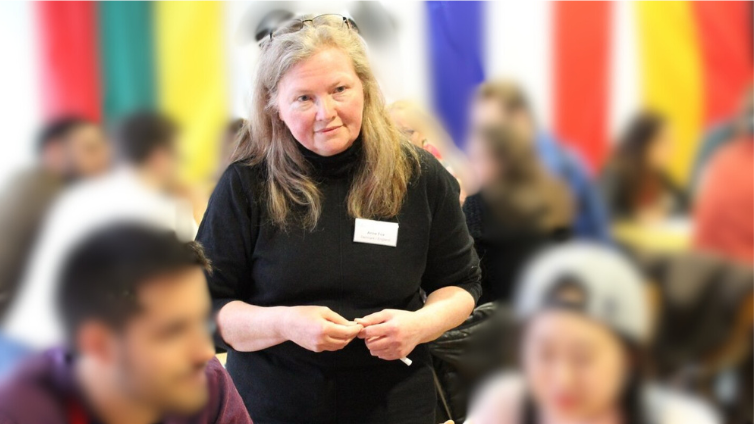Coaching connected learning across borders
I can support learning in online and blended course development (often through EU projects)

Project Partner
Varied experience with Nordplus, Erasmus+ and its predecessors
diversophy – intercultural game
Standard and refugee versions of the game for Denmark in the series
Free course package
Support refugees starting a business: course & facilitator training
Latest posts
-
CRT & Cooperative learning
Cooperative Learning or CL is one strategy that has been adapted for intercultural groups of adults here in Denmark. CL is based on the premise that all of us are better than one of us and that in turn is based on research showing the effectiveness of group learning from the 1930s. CL is based…
-
Go out!
One way of widening the cultural lens of your students is to go out and meet new cultures. This need not mean costly and time-consuming travel abroad though that is probably the most valuable intercultural experience. Sometimes this can mean just a focused outing in the local area. Most urban areas these days display elements…
-
Stereotyping: just lazy thinking?
Part of the argument in favour of empathy is that we are born empathetic creatures. However there are also other forces acting in the opposite direction. These lead to stereotyping as a sort of default behaviour when we don’t know anything else about the person or people standing in front of us. So stereotyping is…
-
Empathy: the key intercultural skill
We have looked at how cultural differences reflect differences in behaviourial norms and how these norms are based on differences in the values that we prioritise. We now need a tool for understanding these differences. Developing empathetic skills is one way of getting to the root of the way in which another person’s different sets of values leads to…
-
Plotting intercultural awareness
How do you know that you are becoming more interculturally aware? You can tackle this question from a quantitative or qualitative point of view.
-
Values: The glue of culture
Culture is based on shared values. Values are the invisible glue that binds cultures together. You can argue that deep down, most humans share the same values. This is the universalist view of culture and is the strategy often used by teachers to try and find what binds their class together. And while true that we…
-
Why fish don’t feel water
[For water, read culture.] We all have a culture and this affects our expectations about how life happens, what is right and wrong and what constitutes normal behaviour (“how we do things around here”). The point is that there is no one correct world view but that we all, without exception, see the world through…
-
What does culturally responsive teaching look like?
Culturally responsive teaching can be many things. Content The most obvious starting point is looking at the subject you teach. You can find the intercultural angle of whatever subject you are teaching though some are easier than others. Cooking and languages for example include intercultural aspects almost without effort, though you can choose to be…
-
What is culturally responsive teaching?
The term culturally responsive teaching (CRT) originates from the US and addresses mainly teachers in K12 school situations. Here the aim is to increase motivation by making sure that every child feels valued and included. A great deal of the US focus is on closing the divide between black and white and increasingly on Latino immigrants. Here…
-
Culturally Responsive Teaching: A framework
The Teaching Culture course will help teachers of adults get more out of their students by recognising the additional potential that those with varied cultural backgrounds bring to the room. One of the basic aims of the course will be about how to increase student motivation through culturally responsive teaching. According to Wlodkowski (pdf) such a…